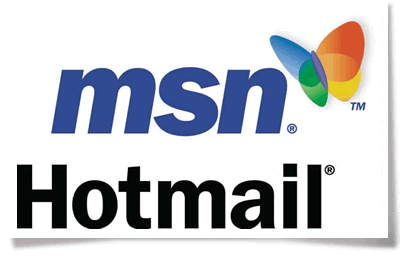
Buzz marketing, throughout its brief history, has been characterised by constantly shifting parameters. After all, when a marketing form tries to capture the human imagination or social zeitgeist it’s bound to be hard to pin it down to hard and fast rules. Whilst there are “guides” to the art of the buzz none of them can really offer more than a study (albeit an in-depth one) of the theories behind the actions in a word of mouth campaign – and we shouldn’t expect any more. By its very nature viral marketing (as an aside all the terms used so far – buzz, word of mouth and viral – refer to the same discipline) is an art that delivers more knowledge through observation and practice than it can through book-learned theory.
And with that in mind, here are a selection of campaigns that worked or didn’t and why we think that is. Read on…
One of the most successful of all campaigns was that of a company selling their online email tool in 1996. One unsung ad exec suggested the addition of a six-word strapline to all of the email sent by their customers. The beauty of the idea lay in its simplicity – by making some (relatively) cheap technical adjustments they could bring their message to a truly captive and opt-in audience without even having to pay for the delivery method. So it was that a young company called Hotmail simply added “Get Your Free Email At Hotmail” at the end of all sent mail and grew their business by 12,000,000 customers in 18 short months.
We believe that the key to this campaign’s success was the unobtrusive and subliminal nature of its advertising. At no point were consumers put in a position where they believed they were being marketed to. Furthermore so passive was the message delivery that it was easy for it to embed itself in consumer conscious without, again, any sensation of being subjected to the hard sell.
We also believe it was this factor that led to Burger King’s 2004 campaign (Subservient Chicken – Google it if you’re not sure…) being, to all intents and purposes, a failure. Well, that’s to say that it was a failure in that it didn’t in any way drive more people to eat Burger King burgers – it just drove them to talk alert their friends to Subservient Chicken’s presence on the internet. And on that front it was very successful. However, for the purposes of marketing the brand offering was just too diluted to register.
Another campaign that was hugely successful but is now largely forgotten as its efforts did not help the product it was promoting in the long run was that of toy manufacturer Hasbro and its pioneering technique to find influential consumers. In 2001 whilst promoting its P-O-X console (aimed at 8-13 year olds) the idea to venture into playgrounds and amusement arcades and ask the children there who the coolest kid they knew was hit upon. Armed with names, researches then sought out these children and repeated the exercise. This went on and on moving up a cool-kid ladder until a handful of “alpha pups” were discovered…the ones who answered “me” to the question.
These children were then offered $30 to come and play P-O-X and, after doing so, were given 10 consoles each to distribute to their friends. The campaign distributed 900 consoles across 1400 schools and whipped up a storm. The idea was hailed as marketing genius but, after a brief moment in the sun, the P-O-X console faded from view. Perhaps proof that even the best conceived marketing ideas can fall flat when the product they’re promoting doesn’t meet the exacting standards of consumers.
One way to destroy a campaign after initial success is to brag about the way it worked – and this was proved by Sony after an impressive opening salvo in their 2002 T68i camera phone campaign. The company had hired teams of actors to roam the streets of ten US cities pretending to be tourists needing their photos taken. They would approach members of the public and ask them to take a picture with Sony’s phone. They would then engage the customer in conversation promoting the phone. All would have been well, but when Sony started bragging outrage ensued to the detriment of the brand.
And finally, one cautionary note more, if you’re putting together a campaign with the potential for big winnings for members of the public it’s good to think of the possible ramifications. It was a lack of foresight of this type that led to General Motors turning their Pontiac giveaway in 2004 into a laughing stock. Having decided to give away a Pontiac to every member of the Oprah Winfrey’s show studio audience (276 worth a grand total of $7 million – with the event itself garnering at least that much in free advertising and press coverage) they overlooked one crucial thing…the resultant tax bill for those who received a car; some $7,000. Within days General Motors had made the news across the world…and the stories weren’t complimentary.
You’ll see from this article that the failures outnumber the successes in the stories we’ve detailed – but that’s as much about the fact that good marketing campaigns often go unnoticed (and stay that way when buzz is involved – no one really wants to share their secrets!) as it is about our wish to point out the pitfalls that lie for the unwary.
That being said – a well run campaign with a savvy company can be hugely effective for your brand. And, as buzz enters a new era of advertising, it’s certain to be at the forefront of campaigns in coming years.
